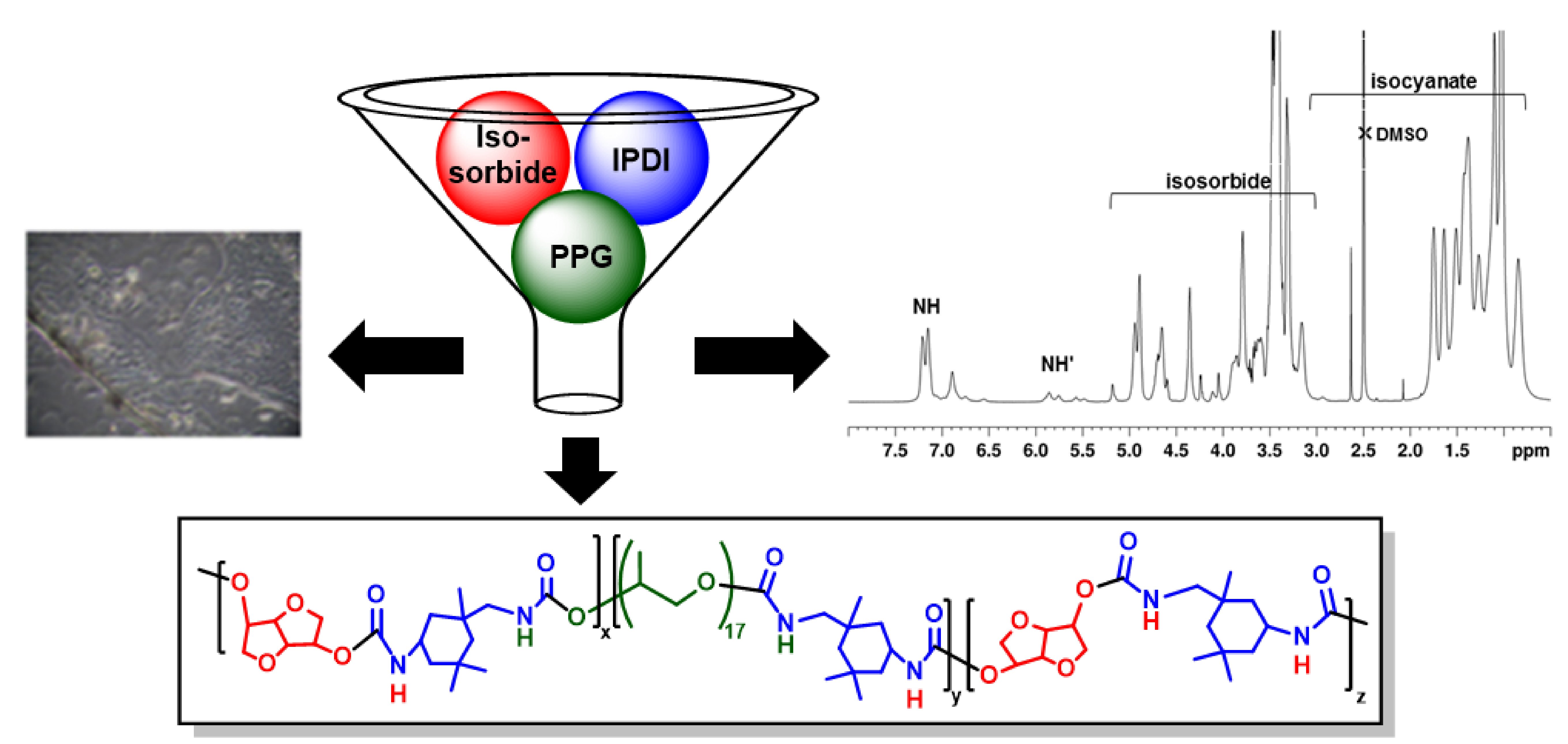The synthesis of four samples of new polyurethanes was evaluated by changing the ratio of the diol monomers used, poly(propylene glycol) (PPG) and D-isosorbide, in the presence of aliphatic isocyanates such as the isophorone diisocyanate (IPDI) and 4,4′-methylenebis(cyclohexyl isocyanate) (HMDI). The thermal properties of the four polymers obtained were determined by DSC, exhibiting Tg values in the range 55-70 ºC, and their molecular structure characterized by FTIR, 1H and 13C NMR spectroscopies. The diffusion coefficients of these polymers in solution were measured by the Pulse Gradient Spin Echo (PGSE) NMR method, enabling the calculation of the corresponding hydrodynamic radii in diluted solution (1.62–2.65 nm). The molecular weights were determined by GPC/SEC and compared with the values determined by quantitative 13C NMR analysis. Finally, the biocompatibility of the polyurethanes was assessed using the HaCaT keratinocyte cell line by the MTT reduction assay method showing values superior to 70% cell viability.

